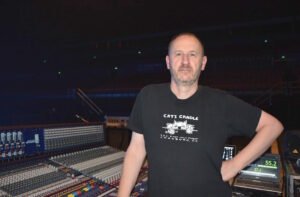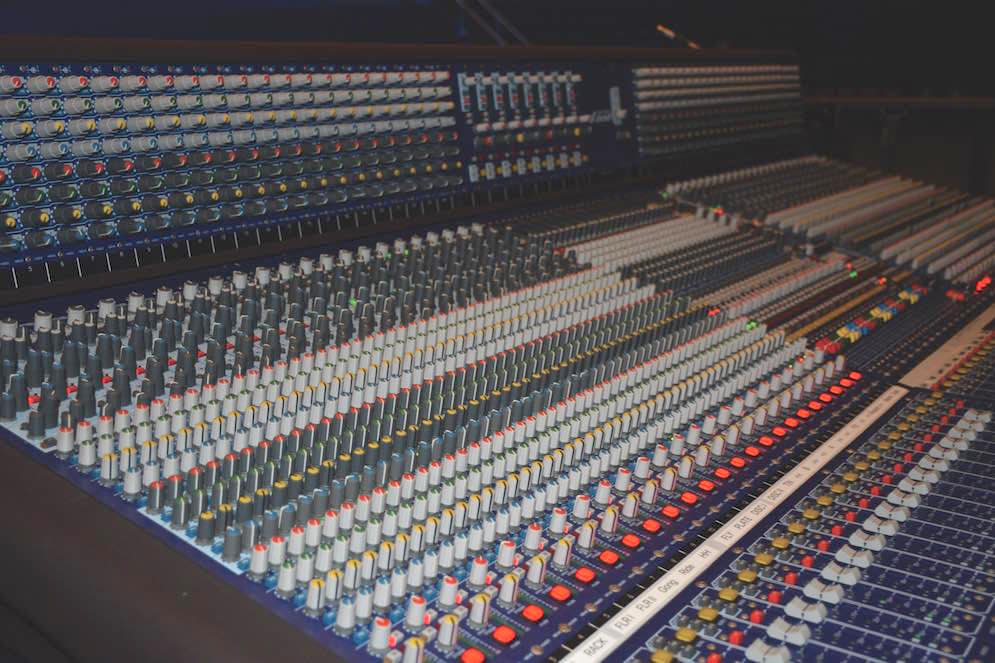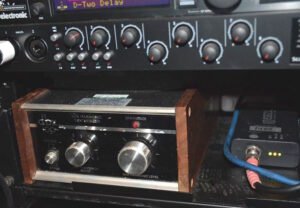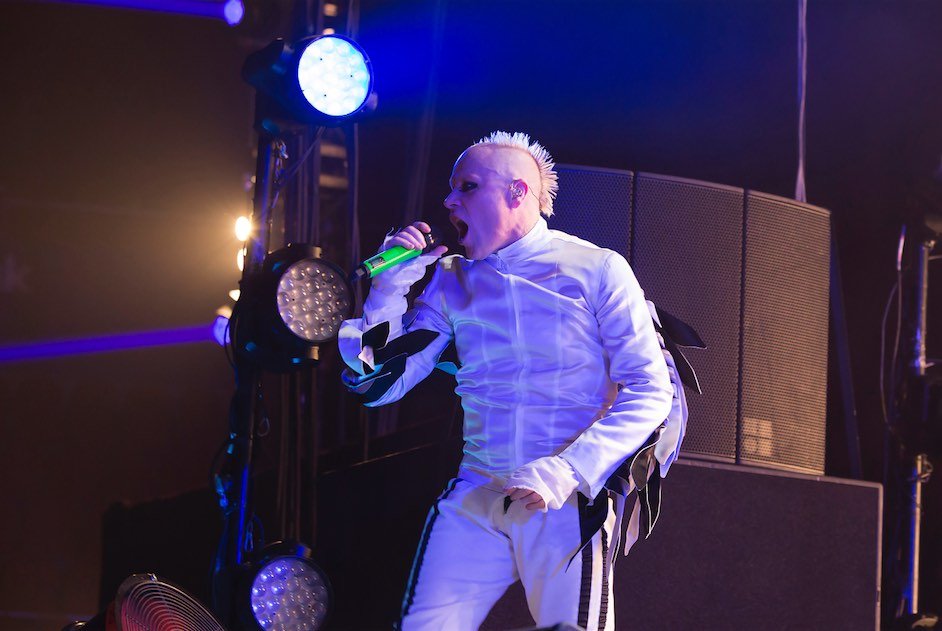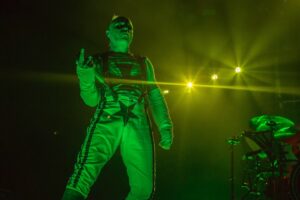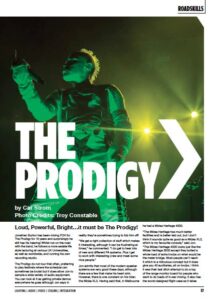News
12 Mar 2019
The Prodigy
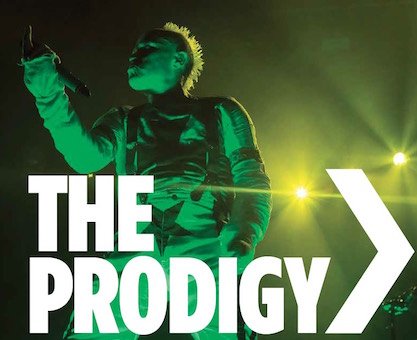
Subscribe to CX E-News
ROADSKILLS
The Prodigy
by Cat Strom.
Photo Credits: Troy Constable
Loud, Powerful, Bright…it must be The Prodigy!
Jonathan Burton has been mixing FOH for The Prodigy for 15 years and surprisingly he still has his hearing! Whilst not on the road with the band, he follows a more sedate life style lecturing at various UK Universities, as well as worldwide, and running his own recording studio.
The Prodigy do not tour that often, preferring to play festivals where the schedule can sometimes be brutal but it does allow Jon to sample a wide variety of audio equipment. You can look at it as getting private demos everywhere he goes although Jon says in reality they’re sometimes trying to fob him off!
“We get a right collection of stuff which makes it interesting, although it can be frustrating at times,” he commented. “I do get to hear lots of new and different PA systems. Plus I get to work with interesting crew and meet some nice people.”
Jon admits that most of the modern speaker systems are very good these days, although there are a few that make his heart sink. However, there is one constant on his rider; the Midas XL3. Having said that, in Melbourne he had a Midas Heritage 4000.
“The Midas Heritage has much better facilities and is better laid out, but I don’t think it sounds quite as good as a Midas XL3, which is my favourite console,” said Jon.
“The Midas Heritage 4000 looks just like the Midas Heritage 3000 except they bolted a whole load of extra knobs on what would be the meter bridge. Most people can’t reach it which is a ridiculous concept but it does give you 40 auxiliaries, all on knobs.
“I think it was their last ditch attempt to do a top of the range monitor board for people who want to do loads of in-ear mixing. It also has the worst-designed flight case as it takes six people to get it out. However, the Midas Heritage is a good sounding console.”
Jon has not made the switch to digital consoles describing himself as a bit of a ‘dub style mixer’ who likes to throw lots of effects into the mix and have everything in front of him. He notes that he finds a digital console too constricting plus he still has not heard one that sounds better than a Midas XL3. When he finds a digital console that is easier to use and sounds better, he’ll make the swap.
“I have just purchased a Midas XL3 32 channel which is a smaller frame format similar in size to a DiGiCo SD10 so it doesn’t take up much room at festivals,” he added.
“I’ve also got an add-on little Allen & Heath Qu-Pac desk which is doing some extra channels because I’ve gone down to a smaller console, but most of the channels I use all the time are right in front of me on the main console.”
For Australia Jon is just touring a small rack, pedal board, and a laptop running Ableton plugins, such as emulations of the hardware distortion and echo pedals that he has always used.
In the pedal board there’s a Line 6 delay, used for spinning in echoes, a little Korg Kaos pad and the new TC Electronics hardware controllers for their software plugins.
The rack has a TC Electronics D2 delay, TC Electronic M350 reverb and an old wooden dbx100 sub harmonic synthesizer. This is solely used on one drum to make it a really low sound.
Eighth Day Sound provided the East coast tour system including a d&b J Series PA with 20 J Series per side in the main hang and 16 on each of the sides, with B2 subs and d&b J-INFRA subs.
“We use more subs than most people but not all the time, more as an effect,” added Jon. “I like to think it’s more a powerful show than a loud show.
“It’s an interesting gig, because it is so loud onstage. You can’t fight the onstage sound so we delay everything back to Liam’s keyboard fill. That freaks out a lot of engineers. I’ve had colleagues and friends step in for me occasionally and they’ve all said it’s harder than they thought.
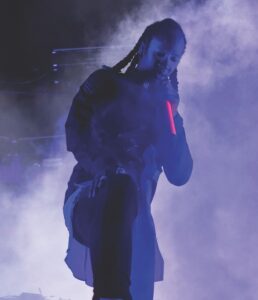 “The main thing is to deliver a dynamic and powerful show but you can’t start too loud, you have to build the show so the audience still go wow at the end.”
“The main thing is to deliver a dynamic and powerful show but you can’t start too loud, you have to build the show so the audience still go wow at the end.”
As he loves subs and echoes, The Prodigy is the ideal gig for Jon who describes his gig as rather an old school reggae / dub show, the kind of shows he did when he was young and which he draws from.
As the drum beat is standing up against electronic beats it has to stand alone on its’ own, so there’s lots of big reverbs and delays.
“The big thing this year is the gong drum which is a 20 inch pancake drum that goes through the dbx sub harmonic synthesizer so it sounds like the biggest bass drum in the world,” said Jon. “For the first couple of days I would forget we had it and this big thudding noise would startle me!”
Jon says that people often ask him what the show looks like and he replies that he has no idea as he hasn’t looked up from the console in 15 years because it’s too damn bright!
As you might expect, the biggest challenge for most of The Prodigy shows is the noise level with the show designed to be between 98 – 100 dB, which is not overly loud.
“Sometimes we get to places where we can’t exceed 97dB, and although that doesn’t sound like a lot, losing that one or two dB makes a massive difference,” Jon stated.
“We use a lot of very low frequencies which give you that feeling of sound, it feels loud. I’ve done experiments on this and it does work. Just by increasing the low frequency, both in amplitude and the frequency range.
“We go down a lot lower than most shows. Quite often we’ll do venues where they expect us to be very loud and are surprised. What is a struggle for us is the C-Weighting because we’re producing loads of really low frequency, we’re quite high on the C-Weighting!
“When the bass drops and the audience go ‘whoa!’ that cheers me up. It is ‘The Prodigy experience’ which is what it’s all about.”
All on stage use Sennheiser IEMs, except Liam, who is on loud. Most mics are Sennheiser, and each singer has three mics which they switch between, depending on how broken they are due to heavy handling.
Keith* was phenomenally good at losing his mic onstage (grey mics on a grey stage was never a good idea) which is why most of his mics are now sprayed a dayglo colour. Tom Maddox ran monitors on a DiGiCo SD10. The sidefills and Liam’s keyboard fill were all d&b, with B2 subs and a mixture of C4 cabinets on Liam and the new V10P cabinets on the sides. Wedges were all d&b M2.
From CX Magazine – March 2019.
CX Magazine is Australia and New Zealand’s only publication dedicated to entertainment technology news and issues – available in print and online. Read all editions for free or search our archive www.cxnetwork.com.au
© CX Media
* Keith Flint, the main presence of The Prodigy died soon after this story went to press. Link
Subscribe
Published monthly since 1991, our famous AV industry magazine is free for download or pay for print. Subscribers also receive CX News, our free weekly email with the latest industry news and jobs.

